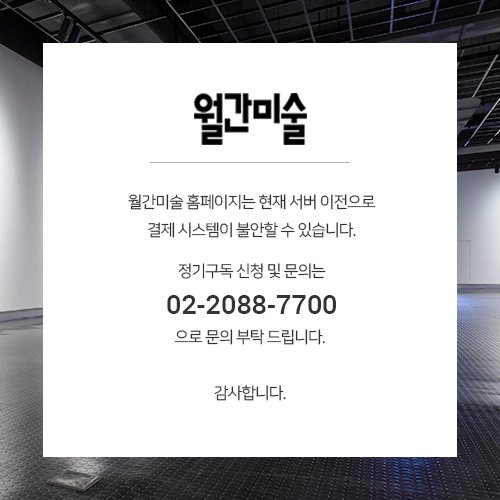LEE JINJU
Impossible Plans
ARTIST REVIEW
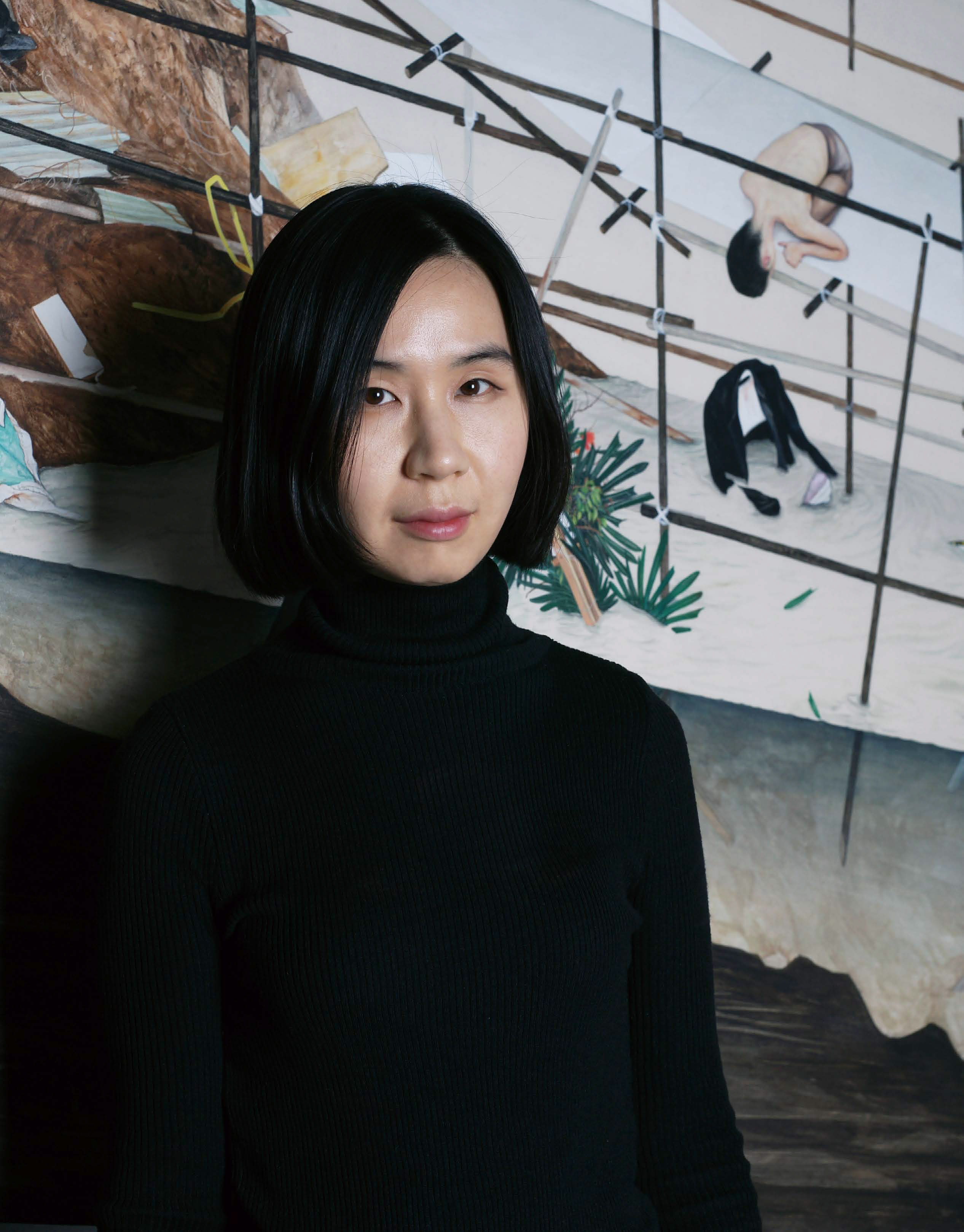
Lee has had several notable solo exhibitions, including The Unperceived (Arario Museum In Space, 2020), TILTED (Triumph Gallery, Moscow, 2019), and SYNAPSES (Edwin’s Gallery, Jakarta, 2018). Significant group exhibitions include Memory, Stare, Wish (Gyeonggi Museum of Modern Art, 2024), The Embodied Spirit (White Cube Gallery, 2023), Goodbye to Love, Marres (Maastricht, 2023), Panorama (SongEun, 2023), Catastrophe and Recovery (National Museum of Modern and Contemporary Art, Seoul, 2021), What Makes Me Wander (Korean Culture Center, Brussels, 2021), among many others. Lee’s works are held in collections at institutions including the National Museum of Modern and Contemporary Art, Seoul Museum of Art, Art Bank of Korea, Seoul Metropolitan Government, Gyeonggi Cultural Foundation, POSCO Art Museum, Gyeongnam Art Museum, SongEun Art and Cultural Foundation, Daesan Cultural Foundation, OCI Museum of Art, Arario Collection, Nesrin Esirtgen Collection (Turkey), Alexander Lebedev Collection (Russia), White Block Art Center, and the Ssamzie Collection.
Impossible Plans
Cho Suk-hyeon | Art Critic & Artbookpress CEO
Refrain of Contradictions: Reality and Surreality / Oblivion and Memory
A response to Lee Jinju’s work can be broadly predicted to fall into a few categories. First, “It’s beautiful.” Second, “It’s surreal.” Third, “It’s strange.” These reactions help us understand the beauty and style that the artist’s artistic approach achieves. When looking at her recent work, The Unperceived (2020), one is overwhelmed by the large scale and three-dimensionality of the paintings that fill three surfaces, and by the immediately striking “splendid” style. This is a creative visual triumph achieved by Lee’s unique painting process and style, which utilizes cotton canvas, traditional Korean pigments, and endlessly deep black hues, like nothing else. The surreal and strange qualities become apparent when delving into the details of her work. On the canvases where landscapes, objects, and figures are combined, surreal landscapes emerge. Desolate suburban scenes (like bare winter trees and roadkill), a woman in pantyhose and a child, potted plants, sneakers, and repeatedly appearing hands all come together. The seemingly unrelated arrays of these elements in single canvases, each carrying its own enigmatic story, gives Lee’s paintings a mysterious allure.
The frequent inclusion of of hands in her work originates from a deep-seated fear within the artist. She harbors an anxiety about injuring or losing her hands as a painter. The turbulent currents, desolate landscapes, and contradictory cycles depicted in works like The Unperceived reflect the contradictions in reality and global politics. These are reimagined into an inner landscape by the artist. Therefore, it is more appropriate to interpret Lee’s work not as “questions posed through surreal landscapes,” but as “the artist’s internal confession through the depiction of reality.”
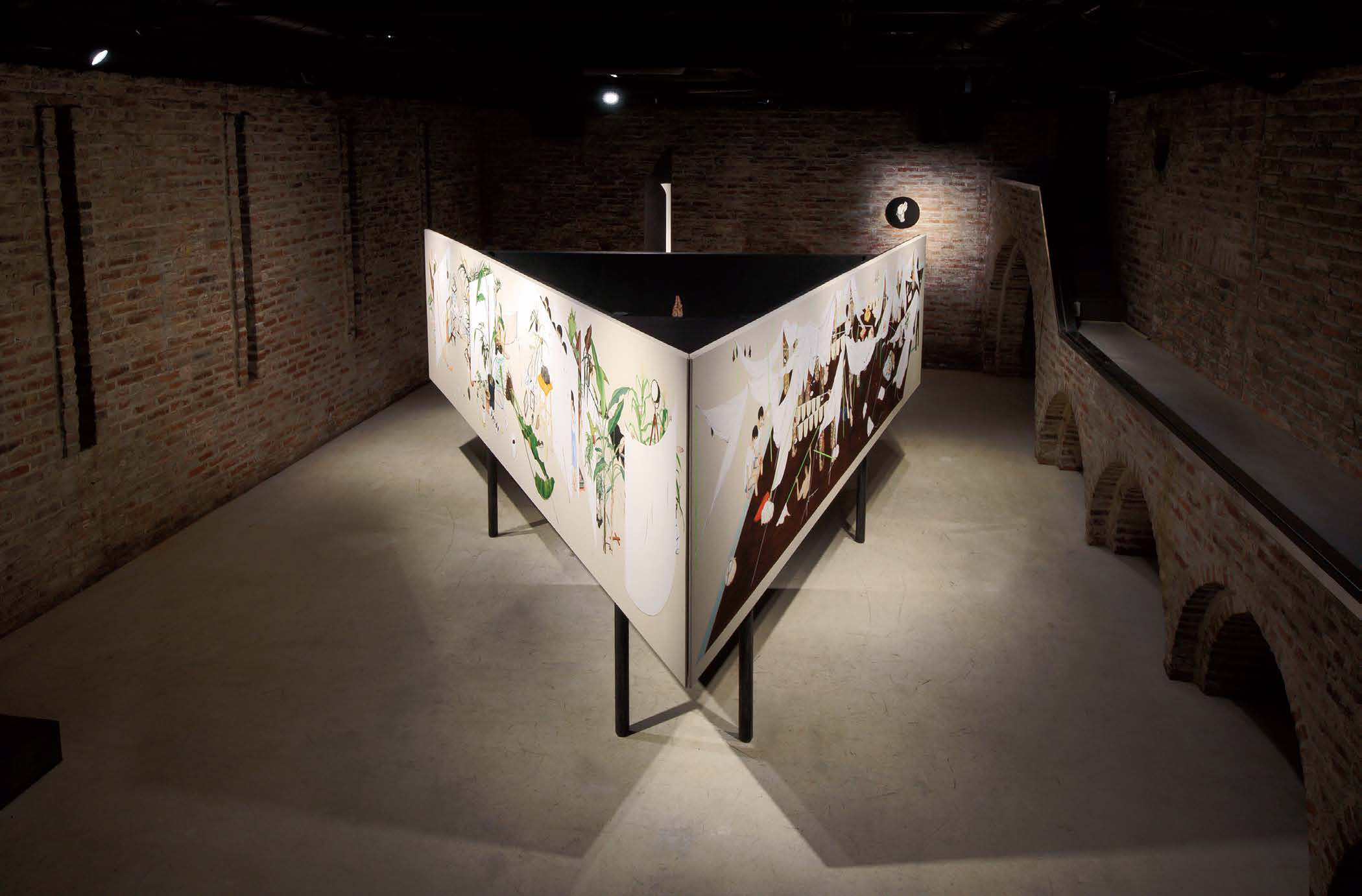
Experiments in Painting: Protrusion and Depression of Perspective, Dead Angle and View
Lee’s distinctive approach to art, as portrayed through her paintings, reflects a strong yearning to break free from the constraints of the two-dimensional canvas. This yearning often manifests in small protrusions and depressions. She also explores the concepts of visibility and invisibility, as well as showing and hiding, and it is worth noting that she takes into account not only her own physicality but also that of the viewer.
The hide-and-seek between the visible and invisible oscillates between memory and forgetfulness, blurring the boundaries between the surreal and the real. Lee communicates “what I have seen” and “the world I am seeing” not simply as descriptions, accusations, or puzzles, but as a world of pure sensation. Starting from completely ordinary and almost photographic images, the artist’s un unique perspective expresses them—discovering, observing, and noting visual “sensations.” Beyond the static and frozen images on the two-dimensional surface, continuous exchanges of glances stir something, leading to the rediscovery of painting and further personal interpretation. Ultimately, a complete realization of “sensing through painting” is achieved. When considering such an approach, it is much more valuable to emphasize the immaterial over the material.
For instance, in one of her “black painting” works portraying her son, the intricate depiction of the small downy hairs on the child’s face stands out. This demonstrates how Lee’s perspective diverges from “ordinary observation,” reflecting her desire to evoke something beyond just the color and form of the subject and the “general” concepts and feelings associated with it. Her aspiration to move beyond reality and towards a different world progresses from “sensing through painting” to “expanding the world through painting,”. This sheds light on the ultimate intention behind her work. The “psychological landscapes” depicted by Lee provide an important path to understanding the world of her paintings, expressing her observations and contemplation over time with excessive meticulousness, sharpness, and sensitivity. This fundamentally represents her attitude towards painting.
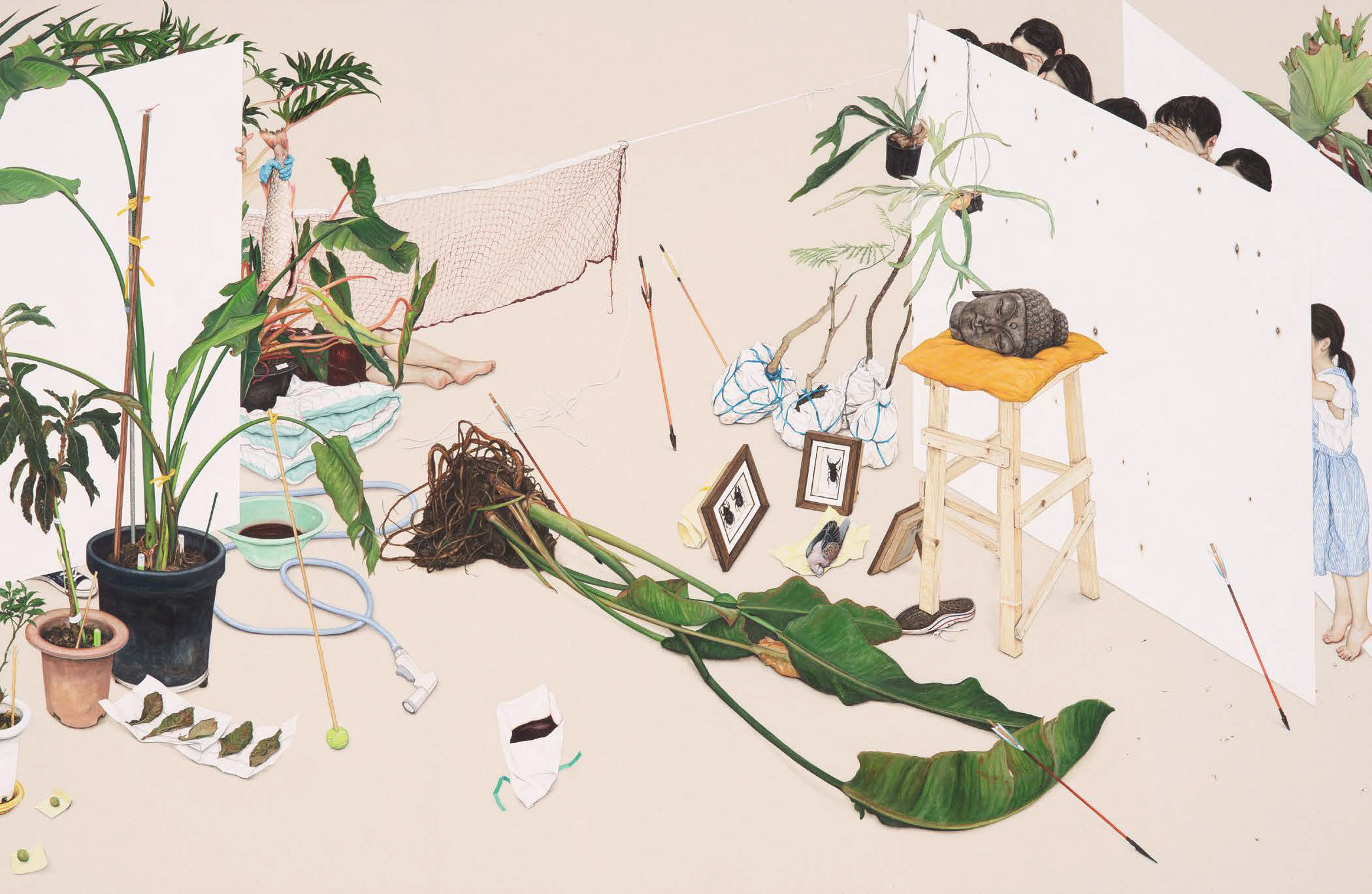
Her works sometimes literally “protrude.” This is achieved through the shape of the canvas itself. Looking at its sides, one realizes it is not flat but convex, forming an oblique angle. This subtle angle reflects the instability and variability of the individual perspectives and viewpoints held by the artist and the viewers. Likewise, The Unperceived also emphasizes the unseen over the seen in the boundary and game between visibility and invisibility. It has a certain accusatory quality to it, which highlights the hidden, the deliberately unseen, or the important things remaining within the realm of dulled perception. The coldness in the beauty of her work likely stems from this very reason.
Lee’s 2024 exhibition at Arario Gallery Jeju can be seen as one of the artist’s new experiments in perspective and visual play. The exhibition space is very, very small. In this space, the artist not only densely packs the gallery with her works and intentionally arranges them to avoid immediate visibility but also installs hidden works. The concealed pieces are placed on the other side of works arranged in a four-sided display, making the double-sided painting only visible as shadows reflected in the black mirror on the floor unless viewers break the sacred rule of the gallery (“do not touch the artwork”) and crawl underneath to deliberately see the hidden side. This aspect makes the work intriguing in its involvement of the viewer’s physicality. The dark world painted on the reverse reflects the artist’s somewhat pessimistic view of the world (“something is wrong”) while moving closer to the culmination of her painting experiments. It expresses the artist’s utmost sensitivity and seeks new realms beyond painting while returning to it. Lee’s plans are impossible to realize within the traditional genre of painting because she continues to wander between forgetting and remembering, reality and surreality. Paradoxically, this constant oscillation provides the driving force for her ongoing experiments in painting.
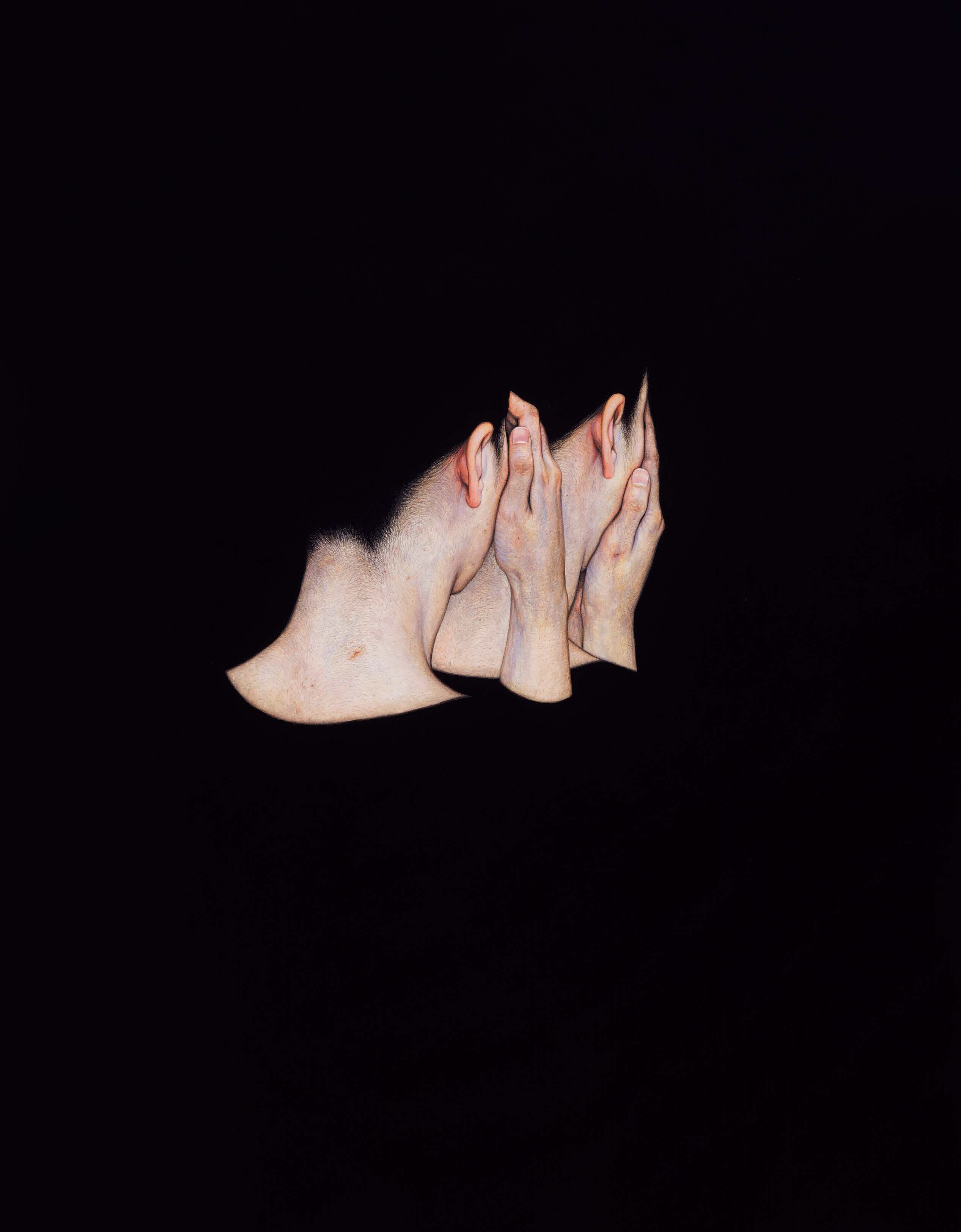
‘문화체육관광부와 (재)예술경영지원센터의 지원을 받아 번역되었습니다.
Korean-English Translation of this book(or text etc) is supported by Ministry of Culture, Sports and Tourism and Korea Arts Management Service’
© (주)월간미술, 무단전재 및 재배포 금지

